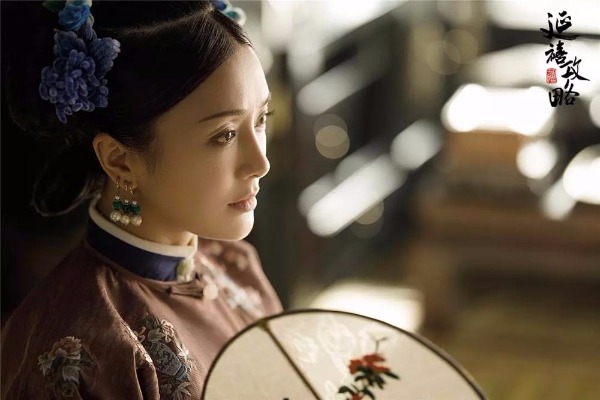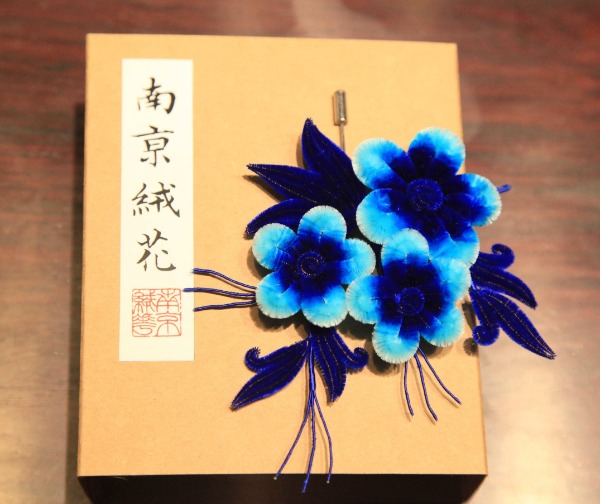Traditional art forms such as Dashuhua shows and velvet flowers are adding authenticity to new historical dramas.
Traditional Chinese culture is flourishing on screen, as ancient costumes, food, etiquette and lifestyles are increasingly appearing in hit TV and online dramas.
In the recent online series Story of Yanxi Palace, forms of intangible cultural heritage such as Kunqu Opera, embroidery and kesi, a silk-weaving technique, play out in close succession.
The series focuses on harem life during the reign of Emperor Qianlong (1711-99) in the Qing Dynasty (1644-1911), telling the story of how heroine Wei Yingluo rose from being a lowly maidservant to the position of a royal concubine.
With a total of more than 14.5 billion views by Aug 29 according to Maoyan, a Chinese film database, the series has sparked heated discussion online, not just about the storyline but also regarding the panoramic locations and detailed props that highlight traditional culture.
In Story of Yanxi Palace, one of the emperor's noble consorts invites folk artisans to rehearse a performance of the art form Dashuhua, or "striking iron flowers", to prepare for the birthday celebrations of the emperor's mother.
It's the first time that Dashuhua, the provincial intangible cultural heritage from Hebei with a history of more than 500 years, has been presented in a Chinese TV drama.

The online series Story of Yanxi Palace has attracted viewers both for its storyline and props that highlight traditional Chinese culture, such as headwear made of velvet flowers. (Photos provided to China Daily)
In 2016, the BBC documentary Chinese New Year: The Biggest Celebration on Earth carried shots of the spectacular "canopy of flowers made from flying shards of molten metal".
Dashuhua is a traditional form of fireworks performance that takes place during certain festivals.
Using special scoops made from willow roots, the performers, who are dressed in sheepskin coats and bamboo hats, throw molten iron burning at around 1,600 C at the city walls. The molten iron then explodes into sparks that look like glittering branches of trees.
In ancient times, blacksmiths performed Dashuhua to simulate fireworks-a luxury that only the most prominent townspeople could normally afford.
According to media reports, there are only four people left in China who are able to master the ancient practice, and three of them are either middle-aged or elderly.
Due to the nature of the performance-that involves throwing superheated coal and molten iron into the air-it's easy for performers to sustain injuries. This is one of the reasons that few from the younger generations seem keen to learn about the ancient custom, says Yu Zhangliang, one of the Dashuhua performers who took part in the series.
Yu Zheng, the producer of Story of Yanxi Palace, wrote in a Sina Weibo post that the performers traveled great distances to present a sample of this endangered heritage, in the hope of bringing the ancient art to a wider audience.
"To inherit and carry forward intangible cultural heritage like Dashuhua through TV dramas is something that we'd like to do more of, and something we hope to do well," Yu Zhangliang says.
Yu Zheng, together with a group of behind-the-scenes researchers, endeavored to integrate as many authentic cultural elements into the series as they could.

Artist Zhao Shuxian (above right) is a rare artist who still makes velvet flowers, a remaining example of the intangible heritage rooted in Nanjing, East China's Jiangsu province, that dates back to the Tang Dynasty (618-907).
A number of scenes are given over to settings modeled on the architecture of the Palace Museum. The interior decoration of the rooms, according to the set designers, match the personalities of the characters from the series.
At the same time, the costumes, makeup and accessories of these characters were partly inspired by portraits of concubines from the era.
The jewelry of the women in the royal court portrayed in the series also attracted a lot of attention. Manchu women wore three pearl earrings on each ear, according to historical documents, which was an important form of etiquette to distinguish them from other women, since the country was ruled by the Manchus in the Qing era.
Thanks to the popularity of the series, Nanjing-based velvet flower artist Zhao Shuxian, 64, has been spending much of his time dealing with requests for interviews-at least two a day, often from the national media.
He is one of the few artists who are still making velvet flowers, a remaining example of the intangible heritage rooted in Nanjing, East China's Jiangsu province, that dates back to the Tang Dynasty (618-907).
Made of silk and copper wires, velvet flowers were popular in ancient times for their long-lasting "blossoms". Its Chinese name, ronghua, a homophone of the word for "glory", is considered auspicious.
Last year, Zhao and his apprentices were invited to create 19 styles of velvet-flower headwear for the series based on photos of hair ornaments housed in the Palace Museum in Beijing.
In the series, Emperor Qianlong's wife Empress Fucha started to wear velvet flowers on her head instead of pearls or jade in order to introduce frugality to the royal harem-a detail that mirrors actual historical events.
The complexity of the velvet flower headwear varies according to the wearer's status, according to Zhao.

In the series, the empress and concubines usually wear headwear with patterns of peony, chrysanthemum or a combination of plants, while the maids wear more plain and less colorful pieces.
Television audiences were not aware of the velvet flowers at first, jokingly comparing the headwear to succulent plants on social media.
Yet, as the crew continued to publicize the back-stories of these cultural elements, audience members started to appreciate their efforts, as a number of them actively tried to explain their origins via a "bullet screen", which allows instant comments to shoot across the screen.
"The dramas have brought intangible heritage back into the public view," Zhao says.
Zhao is usually found working at his studio at the Nanjing Folk Art Museum at Gan's Grand Courtyard, demonstrating how to make velvet flowers to visitors.
Nowadays, Zhao is more willing to use softer, pastel colors rather than showy ones in his flower works. He continues to follow changes in public tastes while digging ever deeper into the historical legacy of the craft.
According to him, besides filmmakers and television crews, young fans of hanfu (traditional Chinese clothing) have become the main buyers of his velvet flowers.
"We hope that velvet-flower works will return to ordinary people's lives and become a symbol of folk fashion."
In Zhao's view, this is the best way to keep the endangered folk craft in the limelight.
The online series Story of Yanxi Palace has attracted viewers both for its storyline and props that highlight traditional Chinese culture, such as headwear made of velvet flowers.


